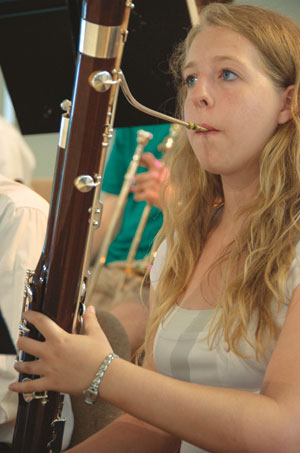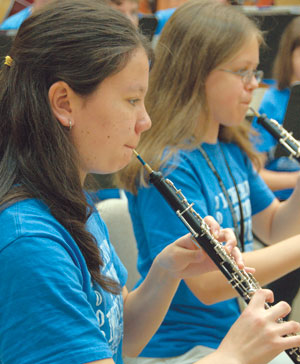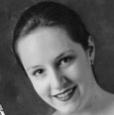Double reed players often struggle with developing a good sound. Poor double reed tone may have a multitude of causes.
A common cause of poor tone is students trying to play loudly to hear themselves in the band. A young bassoon player cannot possibly outplay a trombone, and one oboe is no match for 20 clarinets. Encourage students to focus on their sound – especially the buzzing of the reed – without worrying about whether they’re projecting. Even if double reed players are unable to hear themselves clearly, they should still be able to feel and hear the reed. Students should control the air instead of overblowing.
Young double reed players may also be struggling with a reed that is too hard or too soft. Ideally, students should purchase reeds from a professional or at least find a strength that fits their ability level. A reed that is too soft will create a wide, buzzy, flat sound and poor tone. Students will also not learn the resistance of the reed and will develop the bad habit of overblowing instead of supporting the sound. A reed that is too hard will frustrate students and encourage bad habits as students do whatever it takes to get the reed to speak.
Beginning double reed students should take a deep breath before playing. It takes quite a bit of air to get the reed started. In addition, they should always tongue, with the tip of the tongue touching the reed. The tongue starts the reed vibrating; it is much more difficult to start it with only air. Although young oboe players are more likely to blow and not tongue than young bassoon players, both are guilty.
It is better for beginning double reed players to be flat than sharp. If they are flat it means they have the correct embouchure for the reed but aren’t supporting enough. It is more difficult to teach a student to relax the embouchure if he is playing sharp.
 As students grow, their lung capacity increases. Although this translates to students pushing much more air through the instrument, the sound will be broad and buzzy instead of rounded and beautiful without support. Encourage students to blow less but support more, using whatever visualizations seem to help; I tell students to make it beautiful.
As students grow, their lung capacity increases. Although this translates to students pushing much more air through the instrument, the sound will be broad and buzzy instead of rounded and beautiful without support. Encourage students to blow less but support more, using whatever visualizations seem to help; I tell students to make it beautiful.
Students should practice long tones often; these are not beyond the reach of young players, especially if the tempo is a bit fast. Another technique is to have double reed students exhale completely, then, without breathing in, bring the instrument to the mouth and produce a tone in the middle of the range – A4 or B-flat 4 for oboe, C3 for bassoon. Students will feel as though they are really squeezing to get the last bit of air out, but this demonstrates what it takes to push the air and produce a beautiful tone.






